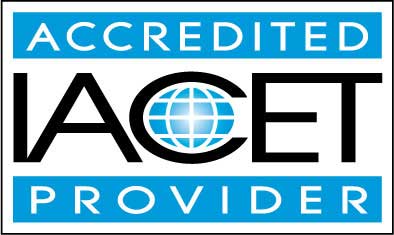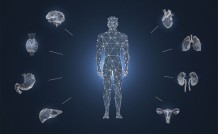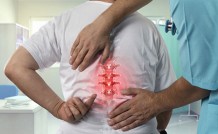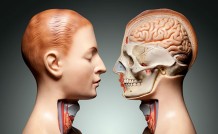Online Class: CPT Coding for Beginners

no certificate
with CEU Certificate*
-
15Lessons
-
26Exams &
Assignments -
4,395Students
have taken this course -
20Hours
average time -
2.0CEUs
Course Description
In-Depth Medical Coding: Navigating the CPT Landscape
Medical coding stands as the cornerstone of the modern healthcare system. It's the bridge between medical practitioners and insurance agencies, ensuring that healthcare providers are compensated appropriately for their services. With a robust foundation in the Current Procedural Terminology (CPT) coding manual, professionals in the medical field can enjoy a seamless experience in medical billing, coding, collections, and office administration.
Our comprehensive self-study course offers a thorough exploration of the CPT coding manual, combining essential guidelines with real-world applications. It serves as a guide for beginners and a refresher for seasoned professionals, catering to a broad spectrum of learners.
Who Will Benefit? This course is meticulously crafted for individuals across various facets of the medical domain:
- Aspiring medical billers and coders looking for a foundational grasp on CPT.
- Medical collectors aiming for accuracy in their tasks.
- Medical office administrators seeking efficiency in day-to-day operations.
- Experienced coders aiming to refine their skills and boost their speed, especially when gearing up for the coding certification exams.
Course Highlights:
-
Intricacies of the CPT Code: Begin with the basics of the CPT coding system. This introductory module sets the stage, allowing students to get acquainted with the code's structure and significance.
-
Deep Dive into Modifiers, Sections, and Symbols: Go beyond the basics by understanding the nuanced differences and critical markers within the CPT.
-
Comprehensive System Reviews: Engage in systematic learning from Evaluation and Management to Radiology and Pathology sections of the CPT. Each section is accompanied by assignments and netlinks to provide an immersive experience.
-
Scenario-based Learning: Contextualize theoretical knowledge with real-life coding scenarios. This ensures not just rote learning but a practical understanding of the application of codes in various medical contexts.
Course Breakdown: Each module of the course is tailored to offer a granular understanding of the various sections of the CPT:
- Introduction to the CPT Coding System: Foundation of CPT and its relevance.
- Modifiers, Sections, and Symbols of CPT®: Decoding the intricacies of CPT.
- Evaluation and Management CPT® Section: Navigating patient interactions and services.
- Anesthesia CPT® Section: Grasping codes related to sedation and pain management.
- Surgery and the Surgical Package in CPT®: Understanding procedural coding nuances.
- General & Integumentary CPT® Section: Delving into skin and related systems.
- Musculoskeletal System CPT Section: Codes for bones, muscles, and joints.
- Respiratory CPT Section: Learning codes for lung and airway procedures.
- Cardiovascular CPT Section: Delving into the heart and blood vessels.
- Digestive System CPT Section: Codes for gastrointestinal procedures.
- Urinary System CPT Section: Navigating renal and urinary procedures.
- Male and Female Genital CPT Section: Understanding reproductive system codes.
- Maternity CPT Section: Emphasizing childbirth and maternal care.
- Nervous System CPT Section: Unpacking codes for neurological procedures.
- Radiology and Pathology CPT Sections: A look into diagnostic procedures and laboratory tests.
Whether you're starting your journey in medical coding or refining your expertise, our course promises a transformative experience. Dive deep into the world of medical coding, unlock opportunities, and set yourself up for success in the dynamic world of healthcare. Join us and steer your career in the right direction with a command over CPT coding!
Course Motivation
In the beginning, the billing process involved sending a bill to the patient or to an insurance carrier. The physician (also referred to as provider) charged a service, such as an office visit, at a dollar amount. The dollar amount was handwritten on a superbill (charge ticket) and typed on the patient's statement. The biller would proceed to type the charges on an insurance claim form.
This method worked for a time, until third-party payers became involved in the payment process. The process grew too fast, and it became too difficult to keep up with how and what to pay for a procedure or service.
A system was created to describe the procedures by code numbers. Each code describes a procedure and the billing using these codes, which became the source for the current system used today, Current Procedural Terminology (CPT).
The CPT Code
CPT is a set of codes that identifies a description of a procedure or service. CPT began in 1966 and was published by the American Medical Association (AMA). The five-digit code is a way of communicating to an insurance company, a patient, or a physician, what service or procedure was provided to a patient.
It does not have any value if it is not linked to an ICD-10 (diagnosis) code. This process is known as "medical necessity." The code also has to match the place of service. (Read the first page of the CPT manual regarding "Place of Service."
It is extremely important to have current coding manuals in the medical office. Annual updates are made, and not having a current version of the coding manuals can cause the practice reduction in pay if the wrong CPT code is billed for the service, if the place of service does not match the five-digit CPT code, or if the service is not medically necessary.
The CPT Index
The index in the CPT coding manual is located in the beginning or the end of the coding manual, depending on the edition that is purchased.
When searching for a CPT code, always begin in the index. The search can begin with the name of the procedure (such as endoscopy, sigmoidoscopy or colonoscopy), the organ (liver, heart), system or body site (such as the colon), the name of the condition (Colles fracture), a synonym, and eponym, or an abbreviation (such as ECG or EKG). The Index is located in the back part of the CPT coding manual.
A specific code, or range of codes, in the CPT index guides the coder to locate the procedure or surgery that was done. For instance, if the index indicates the five-digit CPT code and a comma, the coder would review each code provided. If a hyphen is indicated between two codes, the coder would review each code, beginning with the first code, up to the last code.
Do not code directly from the index. The codes are to be assigned from the main body of the CPT manual. Remember the rule: index first, confirm second. After locating the code in the index, double-check the code and the description in the main body of the CPT manual.
Description of CPT Codes
Stand-alone codes are referred to as "parent" or "root" codes. Indented codes are found in the CPT coding manual following the parent code. Special attention must be paid when reading the description of the CPT code. The codes are divided into distinct types of services. As we move on through the lessons, you will learn about parent codes and indented codes.
CPT Guidelines
Each section of the CPT manual contains guidelines for the specific chapter. Read and become familiar with the guidelines prior to coding. Important information is listed in the guidelines and becoming familiar with the guidelines will help you make sense out of coding.
- Completely Online
- Self-Paced
- 6 Months to Complete
- 24/7 Availability
- Start Anytime
- PC & Mac Compatible
- Android & iOS Friendly
- Accredited CEUs

Course Lessons
Introduction to the CPT Coding System
 Lesson discussions: How would you rate this lesson?; Test your Knowledge; Test your Knowledge; Test your Knowledge; Test your Knowledge; Test your Knowledge; My understanding of this assignment; CPT coding Manual; Reasons for Taking this Course
Lesson discussions: How would you rate this lesson?; Test your Knowledge; Test your Knowledge; Test your Knowledge; Test your Knowledge; Test your Knowledge; My understanding of this assignment; CPT coding Manual; Reasons for Taking this Course Complete: Assignment_Intro to CPT Coding Systems
Complete: Assignment_Intro to CPT Coding Systems Assessment: Exam/Intro to CPT Coding
Assessment: Exam/Intro to CPT Coding
Modifiers, Sections, and Symbols of CPT®
 Lesson discussions: How would you rate this lesson?
Lesson discussions: How would you rate this lesson? Complete: Assignment_Modifiers, Sections & Symbols of CPT
Complete: Assignment_Modifiers, Sections & Symbols of CPT Assessment: Exam/Modifiers-Sections and Symbols of CPT
Assessment: Exam/Modifiers-Sections and Symbols of CPT
Evaluation and Management CPT® Section
 Lesson discussions: How would you rate this lesson?; Grading Poll Question
Lesson discussions: How would you rate this lesson?; Grading Poll Question Assessment: Exam/Evaluation & Management
Assessment: Exam/Evaluation & Management
Anesthesia CPT® Section
 Lesson discussions: How would you rate this lesson?
Lesson discussions: How would you rate this lesson? Complete: Assignment_Anesthesia Section
Complete: Assignment_Anesthesia Section Assessment: Exam/Anesthesia Section
Assessment: Exam/Anesthesia Section
Surgery and the Surgical Package in CPT®
 Lesson discussions: How would you rate this lesson?
Lesson discussions: How would you rate this lesson? Assessment: Basic Elements of the Surgical Package
Assessment: Basic Elements of the Surgical Package
General & Integumentary CPT® Section
 Lesson discussions: How would you rate this lesson?
Lesson discussions: How would you rate this lesson? Complete: Assignment_ Integumentary System Coding Assignment
Complete: Assignment_ Integumentary System Coding Assignment Assessment: Exam/Integumentary System
Assessment: Exam/Integumentary System
Musculoskeletal System CPT Section
 Lesson discussions: How would you rate this lesson?
Lesson discussions: How would you rate this lesson? Complete: Assignment_Musculoskeletal System
Complete: Assignment_Musculoskeletal System Assessment: Exam/Musculoskeletal System
Assessment: Exam/Musculoskeletal System
Respiratory CPT Section
 Lesson discussions: How would you rate this lesson?
Lesson discussions: How would you rate this lesson? Complete: Assignment_Respiratory System
Complete: Assignment_Respiratory System Assessment: Exam/Respiratory System
Assessment: Exam/Respiratory System
Cardiovascular CPT Section
 Lesson discussions: How would you rate this lesson?
Lesson discussions: How would you rate this lesson? Assessment: Cardiovascular Section
Assessment: Cardiovascular Section
Digestive System CPT Section
 Lesson discussions: How woul you rate this lesson?
Lesson discussions: How woul you rate this lesson? Complete: Assignment_Digestive System
Complete: Assignment_Digestive System Assessment: Exam/Digestive Section
Assessment: Exam/Digestive Section
Urinary System CPT Section
 Lesson discussions: How would you rate this lesson?
Lesson discussions: How would you rate this lesson? Assessment: Exam/Urinary System
Assessment: Exam/Urinary System
Male and Female Genital CPT Section
 Lesson discussions: How would you rate this lesson?
Lesson discussions: How would you rate this lesson? Complete: Assignment_Male and Female Genital Systems
Complete: Assignment_Male and Female Genital Systems Assessment: Exam/Male & Female Genital Section
Assessment: Exam/Male & Female Genital Section
Maternity CPT Section
 Lesson discussions: How would you rate this lesson?
Lesson discussions: How would you rate this lesson? Complete: Assignment_Maternity Section
Complete: Assignment_Maternity Section Assessment: Exam/Maternity Section
Assessment: Exam/Maternity Section
Nervous System CPT Section
 Lesson discussions: How would you rate this lesson?
Lesson discussions: How would you rate this lesson? Complete: Assignment_Nervous System
Complete: Assignment_Nervous System Assessment: Exam/Nervous System Section
Assessment: Exam/Nervous System Section
Radiology and Pathology CPT Sections
 Lesson discussions: How would you rate this lesson?; Program Evaluation Follow-up Survey (End of Course); Course Comments
Lesson discussions: How would you rate this lesson?; Program Evaluation Follow-up Survey (End of Course); Course Comments Complete: Assignment_Radiology and Pathology Sections
Complete: Assignment_Radiology and Pathology Sections Assessment: Exam/Radiology and Pathology Sections
Assessment: Exam/Radiology and Pathology Sections
Learning Outcomes
- Define and describe the CPT Coding System.
- Define and recognize Modifiers, Sections, and Symbols of CPT.
- Describe and demonstrate coding Evaluation and Management CPT.
- Describe and demonstrate coding Anesthesia CPT.
- Describe and demonstrate coding Surgery and the Surgical CPT.
- Describe and demonstrate coding Integumentary CPT.
- Describe and demonstrate coding Musculoskeletal System CPT.
- Describe and demonstrate coding Respiratory CPT.
- Describe and demonstrate coding Cardiovascular CPT.
- Describe and demonstrate coding Digestive System CPT.
- Describe and demonstrate coding Urinary CPT.
- Describe and demonstrate coding Male and Female Genital CPT.
- Describe and demonstrate coding Maternity CPT.
- Describe and demonstrate coding Nervous System CPT.
- Describe and demonstrate coding Radiology and Pathology CPT.
- Describe and demonstrate coding Medicine CPT.
- Demonstrate mastery of lesson content at levels of 70% or higher.
Additional Course Information

- Document Your Lifelong Learning Achievements
- Earn an Official Certificate Documenting Course Hours and CEUs
- Verify Your Certificate with a Unique Serial Number Online
- View and Share Your Certificate Online or Download/Print as PDF
- Display Your Certificate on Your Resume and Promote Your Achievements Using Social Media

Choose Your Subscription Plan
No Certificate / No CEUs
This course only
| Includes certificate | X |
| Includes CEUs | X |
| Self-paced |

|
| Instructor support |

|
| Time to complete | 6 months |
| No. of courses | 1 course |
Certificate & CEUs
This course only
| Includes certificate |

|
| Includes CEUs |

|
| Self-paced |

|
| Instructor support |

|
| Time to complete | 6 months |
| No. of courses | 1 course |
Certificates & CEUs
Includes all 600+ courses
| Includes certificate |

|
| Includes CEUs |

|
| Self-paced |

|
| Instructor support |

|
| Time to complete | 12 Months |
| No. of courses | 600+ |
Certificates & CEUs
Includes all 600+ courses
| Includes certificate |

|
| Includes CEUs |

|
| Self-paced |

|
| Instructor support |

|
| Time to complete | 24 Months |
| No. of courses | 600+ |
Student Testimonials
- "This course was very helpful in learning the details of CPT coding. The video presentations as an aid in learning were also very useful." -- Debbie W.
- "The instructor was clear and concise when I had questions. Encouraging to her students." -- Joline K.
Related Courses
-
 74 hours
7.4 CEUs
Medical Billing and Coding Course Bundle
+ More Info
74 hours
7.4 CEUs
Medical Billing and Coding Course Bundle
+ More Info
-
 17 hours
1.7 CEUs
Introduction to Medical Billing
+ More Info
17 hours
1.7 CEUs
Introduction to Medical Billing
+ More Info
-
 7 hours
0.7 CEUs
Understanding Concussions
+ More Info
7 hours
0.7 CEUs
Understanding Concussions
+ More Info
-
 17 hours
1.7 CEUs
ICD-10: Medical Coding
+ More Info
17 hours
1.7 CEUs
ICD-10: Medical Coding
+ More Info
-
 20 hours
2.0 CEUs
CPT Coding for Beginners
+ More Info
20 hours
2.0 CEUs
CPT Coding for Beginners
+ More Info
-
 8 hours
0.8 CEUs
Medical Office Administrative Operations
+ More Info
8 hours
0.8 CEUs
Medical Office Administrative Operations
+ More Info
-
 33 hours
3.3 CEUs
Comprehensive Medical Terminology 1 & 2
+ More Info
33 hours
3.3 CEUs
Comprehensive Medical Terminology 1 & 2
+ More Info
-
 22 hours
2.2 CEUs
Medical Abbreviations
+ More Info
22 hours
2.2 CEUs
Medical Abbreviations
+ More Info
-
 17 hours
1.7 CEUs
Medical Terminology 201
+ More Info
17 hours
1.7 CEUs
Medical Terminology 201
+ More Info
-
 2 hours
0.2 CEUs
Careers in Healthcare
+ More Info
2 hours
0.2 CEUs
Careers in Healthcare
+ More Info
-
 6 hours
0.6 CEUs
HIPAA Compliance 101
+ More Info
6 hours
0.6 CEUs
HIPAA Compliance 101
+ More Info









